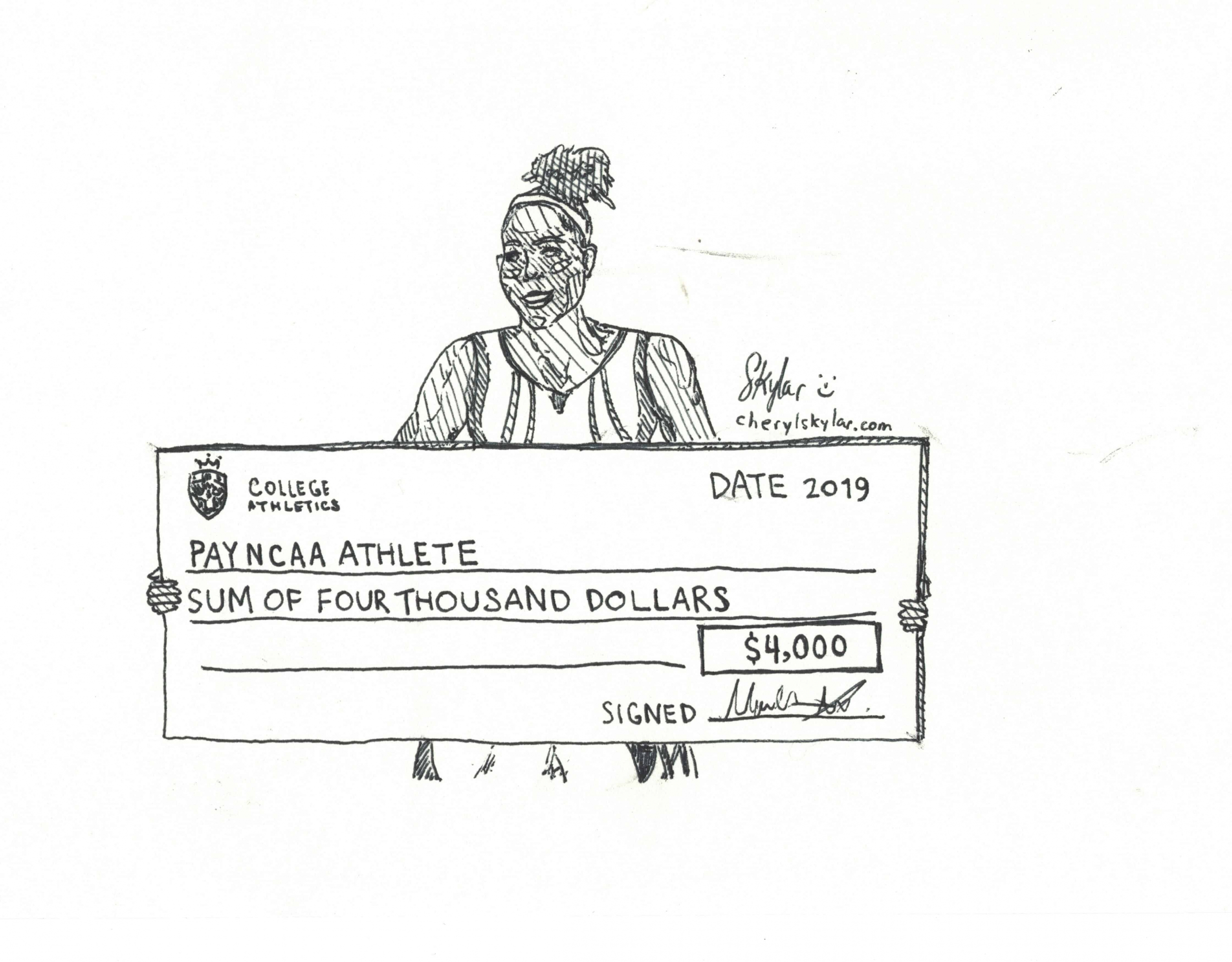Should college athletes be paid? Just last week, star high school basketball player Maori Davenport was suspended from playing on her team because she cashed an $857.20 USD cheque given to her by USA Basketball. A similar case occurred in 2016 when University of Texas swimmer and Singapore native Joseph Schooling received $740,000 USD from the Singapore National Olympic Council for winning its first gold medal in the 2016 Olympic Games.
This controversy around the National Collegiate Athletic Association (NCAA), the non-profit body that regulates athletes and athletic programs in over 1,000 American schools and Simon Fraser University, was triggered last year. Evidence surfaced that various high-profile Adidas executives and coaches had paid men’s basketball and football recruits five-figure sums to influence their recruitment. American schools such as the University of Kansas and the University of Louisville were giving out scholarships to ineligible players, while they were also engaged in bidding wars to attract players to their schools.
These findings were followed up by the Federal Bureau of Investigation. In October, two Adidas employees and one agent were found guilty of wire fraud, sending shockwaves through the NCAA, with NCAA president Mark Emmert promising swift change in the world of collegiate sports.
While there are more federal trials left, as well as NCAA internal investigations, in early December, Emmert seemed to soften his initial stance when he announced that the NCAA panel overseeing the investigations will be put together in August, almost two years after the initial arrests.
So what has really changed as we enter 2019? In addition to the three arrests made, two Louisville Cardinals coaches were fired, while former Cardinals player Brian Bowen II has left to play in Australia after NCAA regulations restricted his eligibility. Nothing substantial, however, has really changed.
It seems that time and time again, athletes are being penalized for receiving any sort of pay for their athletic endeavours. A Drexel University study has shown that if college Division I basketball and football players were paid in equal proportions to their professional counterparts, the average player would be making $260,000 USD.
There are concerns regarding compensation, such as determining what the rates of compensation should be. Questions remain about whether players should receive equal pay, how to deal with discrepancies between school budgets, and how this could affect some of these athletes actually working on finishing a degree at these institutions.
While these questions have been debated for decades now, a utilitarian approach would be the most beneficial in this context.
Utilitarianism is a moral philosophy principle that dictates that the right thing to do in any situation is one that leads to the most happiness and least pain for the greatest number of people. If pay-for-play continues to be illegal, student athletes will continue to be put in an uncomfortable position — they are the ones bringing in nearly $10 billion for their schools, but they only see compensation in terms of athletic scholarships.
The current approach doesn’t maximize the gains for players, and coaching staff see none of the benefits. This gave rise to the current situation: underhanded deals between schools, athletic companies, and players that damage the reputation of college athletics. This approach has seemingly failed to provide equal opportunity in recruiting between institutions. It also promotes the current culture of athletes leaving after a year or two of post-graduate studies in order to support their financial interests.
“There’re student athletes participating in sport but they’re [receiving] scholarships to develop their academics and earn a degree, but they are clearly athletes first and students second, and many of them don’t see the benefit of that academic experience anyways,” says Simon Darnell, Assistant Professor at the Faculty of Kinesiology & Physical Education.
On the other hand, paying athletes seems like a fair distribution of the funds that the players bring in: it allows them to start to build their futures with a brand if they reach the professional leagues, while it also enables them to support themselves and their families. This approach, therefore, seems to bring in more benefits than the current restrictions do.
One thing that we commonly see are NBA players only spending one or two years in college due to financial issues: legalizing payment would allow players to stay in school longer, thus developing their games while also finishing their degrees. Caps on the amount of money each school is allowed to offer could potentially equalize recruiting opportunities across institutions, and strict regulations could ensure regular class attendance.
Through stricter regulation, this initiative limits the corruption that we have seen within the NCAA case, while it also seems to maximize benefits and minimize risks for all involved.
“It’s hard to imagine how [the NCAA] still justify that to themselves. There’s just so much money being made, and those who are labouring to see that money made don’t really see a cut in any significant way. There are lots of arguments to be made that their labour is being exploited,” says Darnell. “We have to give up on the idea that this is an academic enterprise and that this is a professional sport. It is a professional sport in every sense of the word except for paying the players.”
Paying student athletes isn’t a foreign concept — we’ve seen athletes like Kobe Bryant and LeBron James sign professional contracts right after high school. Why should it be so different for aspiring professional athletes in college?


